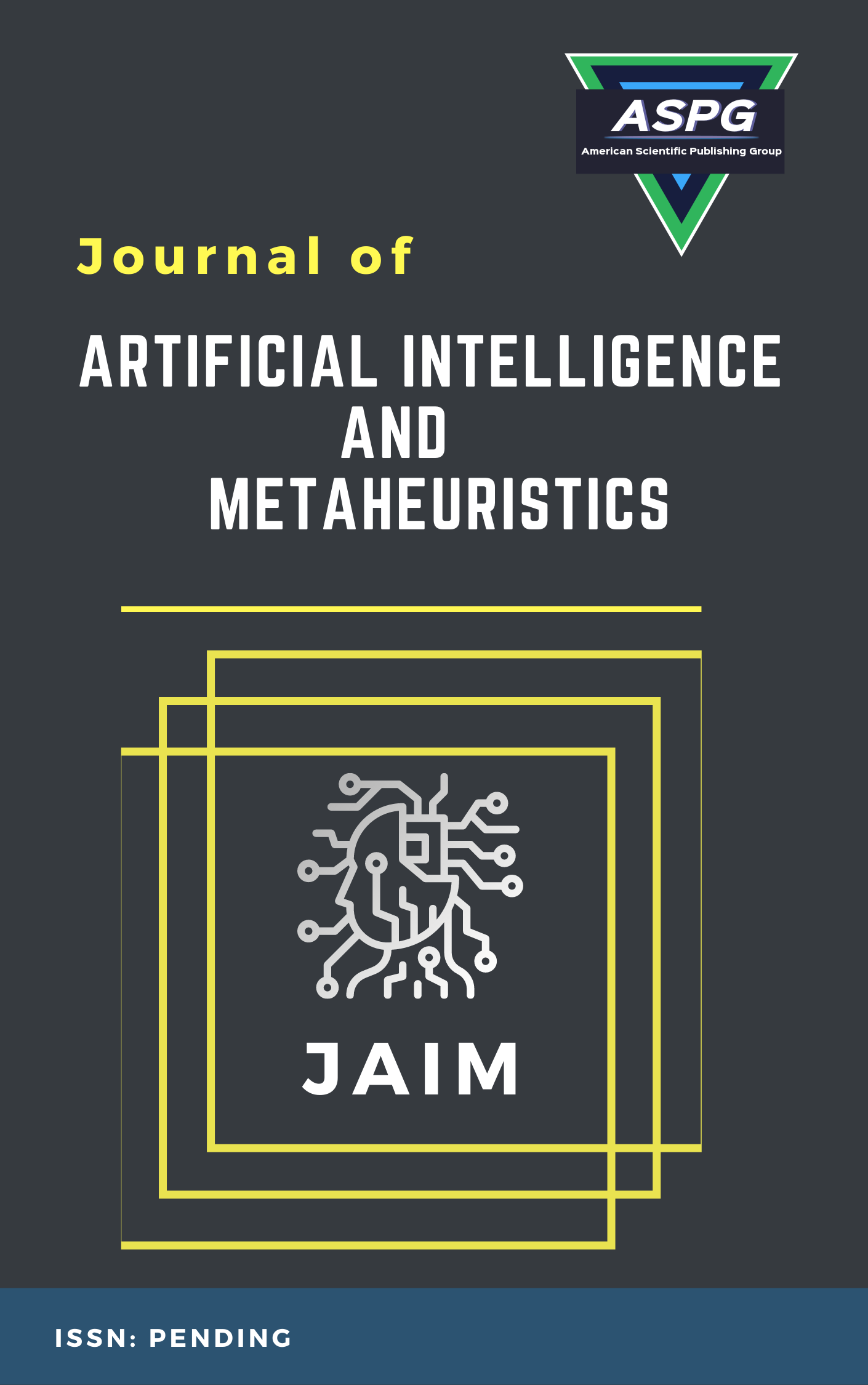

Volume 6 , Issue 1 , PP: 18-26, 2023 | Cite this article as | XML | Html | PDF | Full Length Article
Mona Awad 1 * , Marwa M. Eid 2
Doi: https://doi.org/10.54216/JAIM.060102
Because it is so difficult to distinguish handwritten digits, digit identification is one of the most critical applications in computer vision. This is one of the reasons why it is so tough. The field of handwritten character recognition is one in which a great deal of application of numerous deep learning models has occurred. The startling parallels that can be drawn between deep learning and the brain are primarily responsible for its meteoric rise in popularity. In this study, the Artificial Neural Network and the Convolutional Neural Network, two of the most used Deep Learning algorithms, were investigated with an eye toward the recognition process's feature extraction and classification phases. With the assistance of the categorical cross-entropy loss and the ADAM optimizer, the models were trained on the MNIST dataset. Backpropagation and gradient descent are the two methods utilized during the training process of neural networks that contain reLU activations and carry out automatic feature extraction. In computer vision, one of the most common and widely used classifiers is the Convolution Neural Network, sometimes referred to as ConvNets or Convolutional neural networks. This network is used for the recognition and categorization of images.
OCR , AI , Neural Network.
[1] M Nagu, N V Shankar, K Artificial neural network apurna, A novel method for Handwritten Digit Recognition with Neural Networks, 2011.
[2] Y LeCun, B E Boser, J S Denker, D Henderson, R E Howard, W E Hubbard, et al., Handwritten digit recognition with a backpropagation network, in Advances in neural information processing systems, 396-404, 1990.
[3] A Ashworth, Q Vuong, B Rossion, M Tarr, Q Vuong, M Tarr, et al., Object Recognition in Man, Monkey, and Machine, Visual Cognition, 5, 365-366, 2017 .
[4] J Janai, F Güney, A Behl, A Geiger, Computer Vision for Autonomous Vehicles: Problems, Datasets, and State-of-the-Art. arXiv preprint arXiv:1704.05519, 2017.
[5] K .Islam and R .Raj, Real-Time (Vision-Based) Road Sign Recognition Using an Artificial Neural Network, Sensors, 17, 853, 2017 .
[6] D Arpit, Y Zhou, B Kota, V Govindaraju, Normalization propagation: A parametric technique for removing internal covariate shift in deep networks, in International Conference on Machine Learning, 2016.
[7] I Patel, V Jagtap, O Kale, A Survey on Feature Extraction Methods for Handwritten Digits Recognition, International Journal of Computer Applications, 107, 2014.
[8] I H Witten, E Frank, M A Hall, C J Pal, Data Mining: Practical machine learning tools and techniques: Morgan Kauf Artificial neural network, 2016.
[9] Study and Observation of the Variations of Accuracies for Handwritten Digits Recognition with Various Hidden Layers and Epochs using Neural Network Algorithm Md.Abu Bakr Siddique; Mohammad Mahmudur Rahman Khan; Rezoana Bente Arif; Zahidun Ashrafi,2018
[10] Study and Observation of the Variations of Accuracies for Handwritten Digits Recognition with VariousHidden Layers and Epochs using Convolutional Neural Network Rezoana Bente Arif; Md Abu Bakr Siddique; Mohammad.Mahmudur.Rahman… Khan., Mahjabin Rahman. O, 2019
[11] Beyond human. Recognition: A.Convolutional neural network-based framework for .handwritten character recognition Li Chen; Song.Wang; Wei Fan; Jun Sun; Satoshi Naoi,2020
[12] Dhanya Sudarsan; Shelbi Joseph, A Novel Approach for Handwriting Recognition in Malayalam Manuscripts using Contour Detection and Convolutional Neural Nets, 2020.
[13] Nanehkaran, Y.A., Zhang, D., Salimi, S. et al. Analysis and comparison of machine learning classifiers and deep neural networks techniques for recognition of Farsi handwritten digits. J Supercomput (2020).
[14] S. Oktaviani, C. A. Sari, E. Hari Rachmawanto and D. R. Ignatius Moses Setiadi, Optical Character Recognition for Hangul Character using Artificial Neural Network, 2020 International Seminar on Application for Technology of Information and Communication (semantic), Semarang, Indonesia, 2020.
[15] R. Sharma, B. Kaushik, and N. Gandhi, Character Recognition using Machine Learning and Deep Learning - A Survey, 2020 International Conference on Emerging Smart Computing and Informatics (ESCI), Pune, India, 2020.
[16] P. Gupta, S. Deshmukh, S. Pandey, K. Tonge, V. Urkunde and S. Kide, Convolutional Neural Network-based Handwritten Devanagari Character Recognition, 2020 International Conference on Smart Technologies in Computing, Electrical and Electronics (ICSTCEE), Bengaluru, 2020.
[17] P. Dhande and R. Kharat, Recognition of cursive English handwritten characters 2017 International Conference on Trends in Electronics and Informatics (ICEI) pp. 199-203 2017.
[18] Shalini Puri and Satya Prakash Singh, An efficient Devanagari character classification in printed and handwritten documents using SVM, Procedia Computer Science, 152, 111-121, 2019.
[19] J. Schmidhuber, Deep learning in neural networks: an overview. Neural Networks, 61, 85-117 2015.